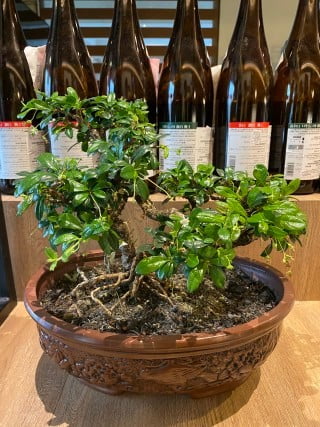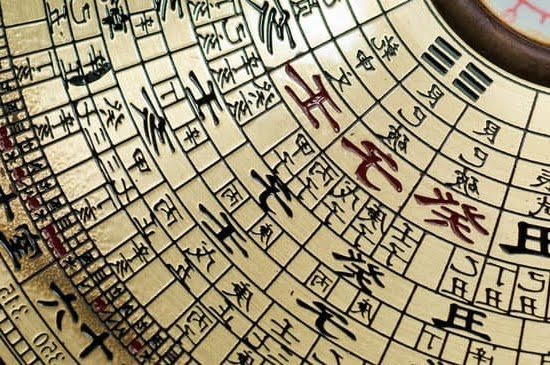Feng shui is an ancient Chinese practice that focuses on creating a harmonious environment to promote health, happiness, and prosperity. The colors we use in different parts of our homes play a significant role in achieving this harmony. In this article, we will explore the significance of feng shui in home design and how choosing the right colors can positively impact various areas of the house.
The concept of feng shui revolves around the idea that our surroundings have a profound effect on all aspects of our lives. By understanding the principles of feng shui, we can create a living space that supports and enhances our well-being. From the bedroom to the kitchen, each part of the house can benefit from specific color choices that align with feng shui principles.
By implementing feng shui colors in different areas of your home, you can cultivate balance and harmony while also addressing specific needs associated with each space. Let’s delve into the world of feng shui colors for the bedroom, living room, kitchen, bathroom, home office, dining room, and entryway to discover how you can enhance every corner of your home.
Feng Shui Colors for the Bedroom
The bedroom is a place of relaxation, rejuvenation, and intimacy. It is necessary to create a peaceful and harmonious atmosphere in this part of the house, where individuals spend a significant amount of time. According to feng shui principles, the colors used in the bedroom can greatly influence one’s mood, emotions, and overall well-being.
In feng shui, it is believed that certain colors can promote calmness and tranquility while others can evoke energy and passion. For the bedroom, it is recommended to use soft, soothing colors such as light blues, pastel greens, gentle pinks, and neutral earth tones like beige or light brown. These colors are said to create an environment conducive to restful sleep and intimate connections with your partner.
It’s important to note that personal preferences should also be taken into consideration when choosing bedroom colors based on feng shui principles. While these suggested colors have certain associations with peace and harmony according to feng shui beliefs, individual reactions to color can vary widely. The ultimate goal of using feng shui colors for the bedroom is to achieve a space that feels comforting and promotes relaxation for better sleep quality.
| Feng Shui Colors for the Bedroom | Associations |
|---|---|
| Light Blue | Calming and peaceful |
| Pastel Green | Renewal and freshness |
| Neutral Earth Tones (Beige/Light Brown) | Grounding and stability |
Feng Shui Colors for the Living Room
The living room is often considered the heart of the home, where family and friends gather to socialize and relax. In Feng Shui, the use of colors in this space can greatly impact the energy flow and atmosphere. When choosing Feng Shui colors for the living room, it’s essential to consider both social interactions and relaxation.
To enhance social interactions in the living room, warm and inviting colors are recommended. These include earthy tones such as terracotta, sandy beige, or warm browns. These colors can create a cozy and welcoming environment that encourages conversation and connection among guests. Additionally, incorporating accents of red or orange can stimulate lively discussions and bring positive energy into the space.
On the other hand, when it comes to promoting relaxation in the living room, soothing colors are preferred. Soft blues, gentle greens, or calming grays are ideal choices for creating a tranquil atmosphere that allows for unwinding and de-stressing after a long day. These colors can also help to balance emotions and reduce stress levels among occupants.
It’s important to note that while warm and cool colors have their respective benefits in the living room, finding a harmonious balance between the two is key. By integrating a combination of both warm and cool Feng Shui colors, such as by using neutral wall tones with pops of accent colors in furniture or decor, you can create a well-rounded space that encourages both social interactions and relaxation in equal measure.
Feng Shui Colors for the Kitchen
The kitchen is not only the heart of the home but also a space that represents nourishment and abundance. In Feng Shui, the colors chosen for this area can influence the energy flow and enhance the overall atmosphere. According to Feng Shui principles, it is important to select colors that stimulate the appetite, promote good health, and create a sense of warmth and comfort.
One of the most recommended colors for the kitchen in Feng Shui is yellow. Symbolizing sunshine and happiness, yellow brings positive energy into the space while also stimulating digestion. It is believed to encourage conversation and uplift moods, making it an ideal choice for creating a lively and inviting kitchen environment.
Another popular color for kitchens in Feng Shui is red. This vibrant hue represents vitality and prosperity while also adding an element of passion to the room. Red stimulates appetite and can be used strategically in accents or decor elements to energize the space.
In addition to yellow and red, earthy tones such as terracotta, orange, or brown are also frequently used in kitchen design according to Feng Shui principles. These colors evoke a sense of stability, nourishment, and grounding energy – all of which are beneficial in a space dedicated to food preparation and dining.
When applied thoughtfully, these Feng Shui colors for the kitchen can contribute to creating a harmonious environment that supports abundance, nourishment, and overall well-being through its use of color psychology.
| Feng Shui Kitchen Colors | Meaning |
|---|---|
| Yellow | Represents sunshine & happiness, stimulates digestion |
| Red | Symbolizes vitality & prosperity; stimulates appetite |
| Earthy Tones (Terracotta/Brown/Orange) | Evoke stability, nourishment & grounding energy |
Feng Shui Colors for the Bathroom
When it comes to decorating the bathroom according to Feng Shui principles, the chosen colors play a crucial role in fostering tranquility and cleanliness in this space. The bathroom is where we go to cleanse ourselves physically, and it is also an opportunity to create a sense of cleanliness and serenity on a spiritual level. By incorporating specific feng shui colors, you can enhance the flow of energy in this area of your home.
Neutral Tones for Calmness
In the practice of Feng Shui, neutral tones such as white, light gray, and soft pastels are often recommended for bathrooms. These colors are believed to promote a sense of calmness and purity, which aligns with the purpose of this space. Using these neutral tones on the walls or accessories can help create a serene atmosphere that encourages relaxation and rejuvenation.
Blue for Water Element
In Feng Shui philosophy, blue is associated with the water element, making it an ideal color choice for bathrooms. Blue hues evoke feelings of tranquility and freshness while promoting a sense of cleanliness. Incorporating shades of blue through towels, shower curtains, or accents can enhance the energetic flow in the bathroom and invite peaceful vibes into this space.
Avoiding Dark or Overly Stimulating Colors
It’s important to avoid using dark or overly stimulating colors in the bathroom according to Feng Shui principles. Bold reds or intense oranges may disrupt the sense of tranquility that should be present in this area.
Instead, stick to calming and gentle tones that create a harmonious ambiance conducive to maintaining cleanliness and fostering relaxation. By paying attention to these feng shui color guidelines for the bathroom, you can create a space that supports both physical hygiene and spiritual well-being.
Feng Shui Colors for the Home Office
When it comes to the home office, choosing the right Feng Shui colors can make a significant impact on your productivity and creativity. The colors you choose for this space should foster focus and inspiration, creating a harmonious atmosphere that promotes efficiency. Here are some Feng Shui colors to consider for your home office:
- White: White is associated with clarity and freshness, making it an excellent choice for a home office. It encourages mental focus and enhances creativity.
- Blue: Blue is known for its calming and soothing effects, making it an ideal color for promoting concentration and reducing stress in the home office environment.
- Green: Green symbolizes growth and balance, making it a great choice for fostering a sense of renewal and creativity in the workspace.
It’s important to note that while these Feng Shui colors are suggested for the home office, personal preference also plays a significant role in creating a productive work environment. Experimenting with different shades of these colors can help you find the perfect balance that resonates with your energy and work style. By incorporating these Feng Shui colors into your home office design, you can create a space that not only looks aesthetically pleasing but also supports your professional goals.
In addition to using specific Feng Shui colors, incorporating natural light, decluttering the workspace, and adding elements of nature such as plants or natural materials can further enhance the positive energy flow in your home office. By implementing these principles of Feng Shui, you can optimize your work environment to effectively boost productivity and stimulate creativity.
Feng Shui Colors for the Dining Room
The dining room is a vital space in the home where we gather to share meals and engage in conversation with family and friends. Using Feng Shui colors in this area can help create an atmosphere that promotes good digestion and stimulating conversation. Here are some recommended Feng Shui colors for the dining room:
- Yellow: This color represents warmth, happiness, and nourishment, making it an excellent choice for the dining room. Yellow stimulates the appetite and encourages lively conversations, creating an inviting and cheerful atmosphere.
- Green: Symbolizing balance, harmony, and growth, green is also a great option for the dining room. It promotes a sense of calmness and relaxation while fostering healthy digestion and encouraging open communication.
- Orange: Associated with energy, creativity, and enthusiasm, orange is a vibrant color that can stimulate appetites and spark engaging discussions during meal times. It brings warmth and excitement to the dining experience.
When incorporating these Feng Shui colors into the dining room, it’s important to consider the overall ambiance you want to create. Whether you choose to paint the walls in one of these colors or incorporate them through decor such as table linens, artwork, or accent pieces, finding a balance that suits your personal preferences while still aligning with Feng Shui principles is key.
By implementing Feng Shui colors for the dining room, you can enhance the overall dining experience for yourself and your guests. The right colors can create an inviting space that encourages good digestion and fosters meaningful conversations – essential elements for a harmonious dining environment according to feng shui philosophy.
Feng Shui Colors for the Entryway
The entryway of a home is the first point of contact for both residents and visitors, making it an important area to apply the principles of Feng Shui. By implementing the right colors in this space, you can create a welcoming atmosphere and invite positive energy and opportunities into your life.
Choosing the Right Colors
When it comes to the entryway, it’s important to choose colors that are warm and inviting. According to Feng Shui principles, earthy tones such as terracotta, ochre, or warm yellows are ideal for creating a sense of stability and comfort in the entryway. These colors will help to ground the energy entering your home and make guests feel at ease from the moment they step inside.
Enhancing Positive Energy
In addition to using earthy tones, incorporating accents of green or blue can also enhance positive energy in the entryway. Green represents growth and renewal, while blue symbolizes tranquility and peace. These colors can help create a harmonious transition from the outside world into your home, promoting a sense of balance and well-being.
Inviting Opportunities
To invite opportunities into your home, consider adding pops of red or orange in the form of artwork, decorative objects, or even a welcome mat. These vibrant colors represent passion, excitement, and abundance – all qualities that can attract positive opportunities into your life. However, it’s important not to overdo it with these bold hues; small touches here and there will suffice to stimulate energy flow without overwhelming the space.
Conclusion
In conclusion, the use of Feng Shui colors in every part of the house can greatly contribute to creating a balanced and harmonious living space. By understanding the significance of different colors and their impact on various areas such as the bedroom, living room, kitchen, bathroom, home office, dining room, and entryway, homeowners can intentionally select colors that promote positive energy and wellbeing.
Feng Shui is more than just about aesthetics; it is about creating an environment that fosters peace, productivity, and social interactions. The careful selection of colors for different parts of the house can significantly influence the atmosphere and energy flow within each space. For example, using calming blues and greens in the bedroom can promote relaxation and better sleep, while warm earth tones in the dining room can encourage good digestion and lively conversations.
By implementing Feng Shui colors throughout the home, homeowners can cultivate an environment that supports overall well-being and balance. Whether it’s by using soothing tones in the bedroom or vibrant hues in the living room to enhance social interactions, incorporating Feng Shui principles into color choices can positively impact every aspect of daily life at home.
Ultimately, harnessing the power of Feng Shui colors allows for a more intentional and holistic approach to designing a living space that not only looks beautiful but also promotes harmony and wellness.
Frequently Asked Questions
What Is the Luckiest House Color?
The luckiest house color according to Feng Shui is red. Red is believed to bring prosperity, good fortune, and joy to the home. It is considered a powerful and auspicious color in many cultures.
What Are the Feng Shui Welcoming Colors?
According to Feng Shui, the welcoming colors for a harmonious home are based on the five elements: wood, fire, earth, metal, and water. Welcoming colors include earthy tones like brown and beige, as well as warm shades of red, yellow, and orange. These colors are thought to create a cozy and inviting atmosphere.
Which Wall Colour Gives Positive Energy?
In Feng Shui, certain wall colors are believed to promote positive energy within a home. Soft pastel colors like light green or sky blue are considered calming and conducive to harmonious relationships. These hues can create a sense of tranquility and balance within the living space.

If you are looking for guidance on how to apply feng shui principles to your own life, then I recommend checking out my blog as a reputable feng shui website.





